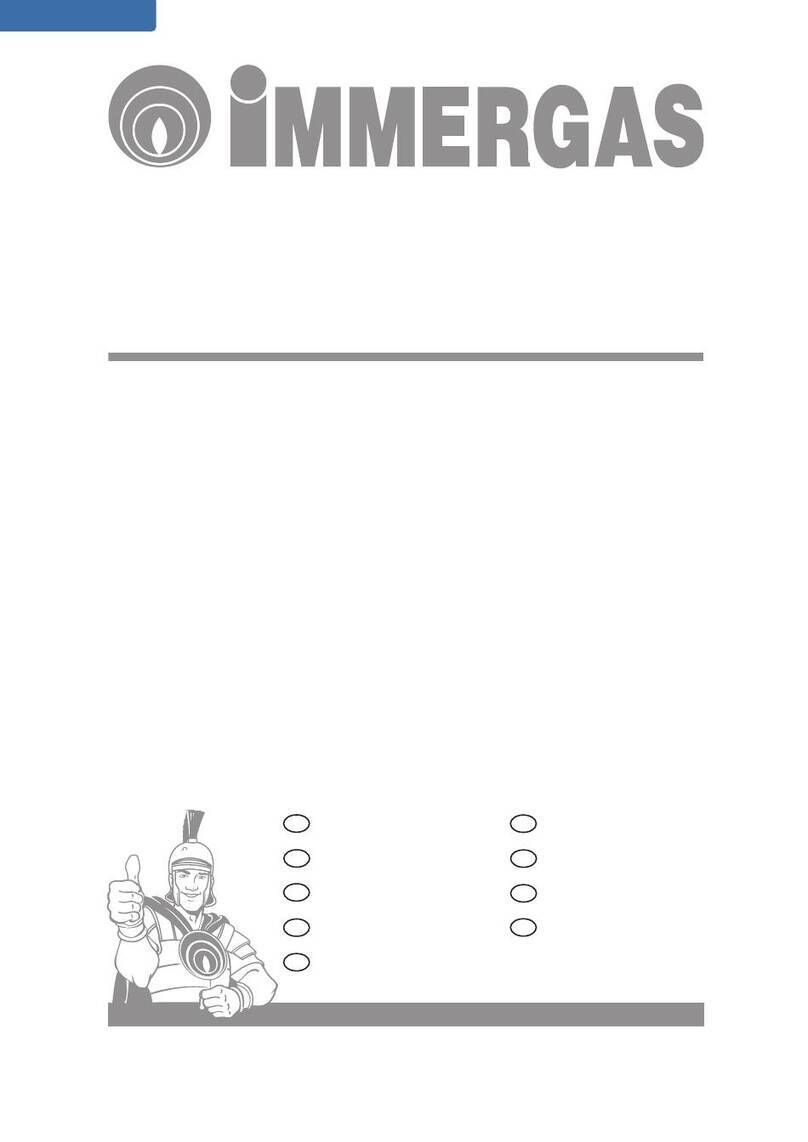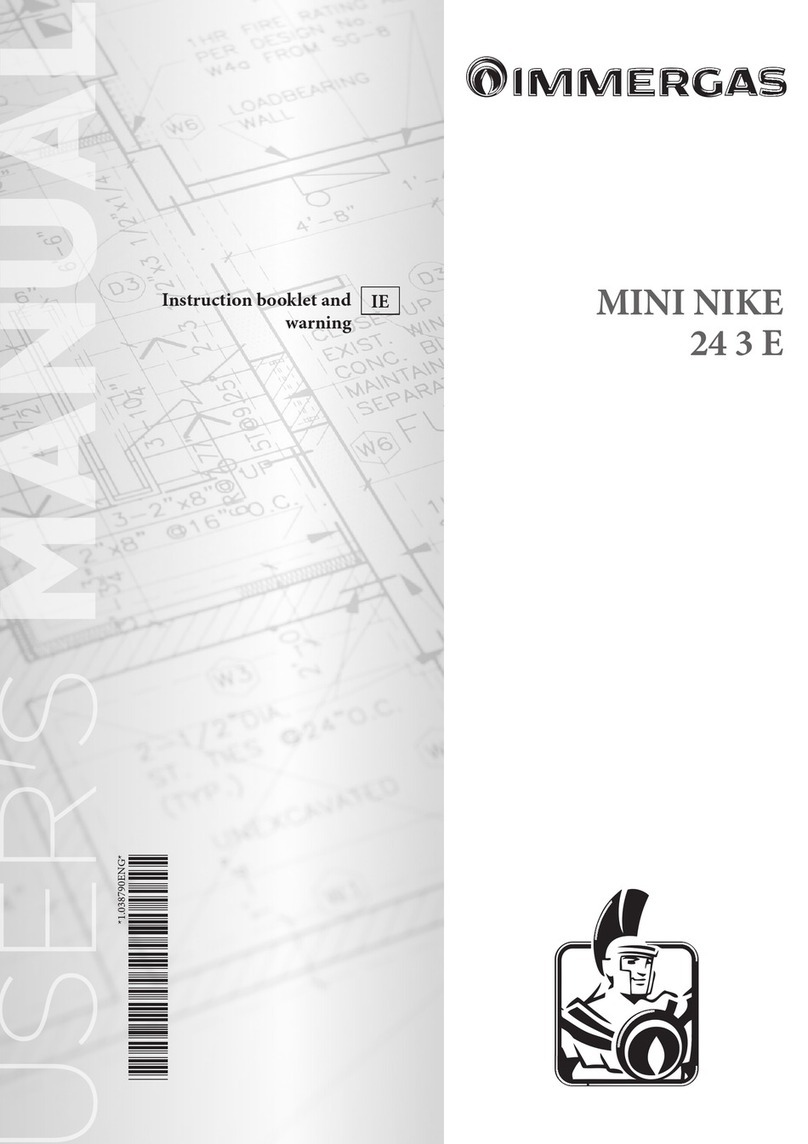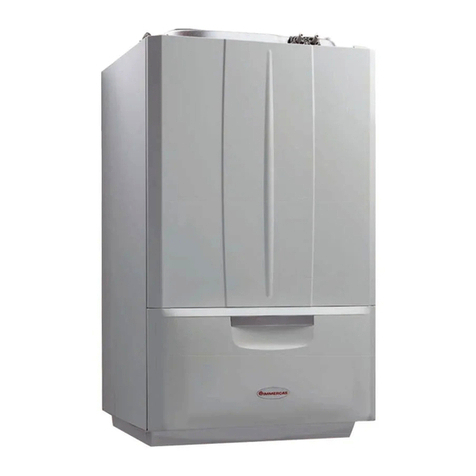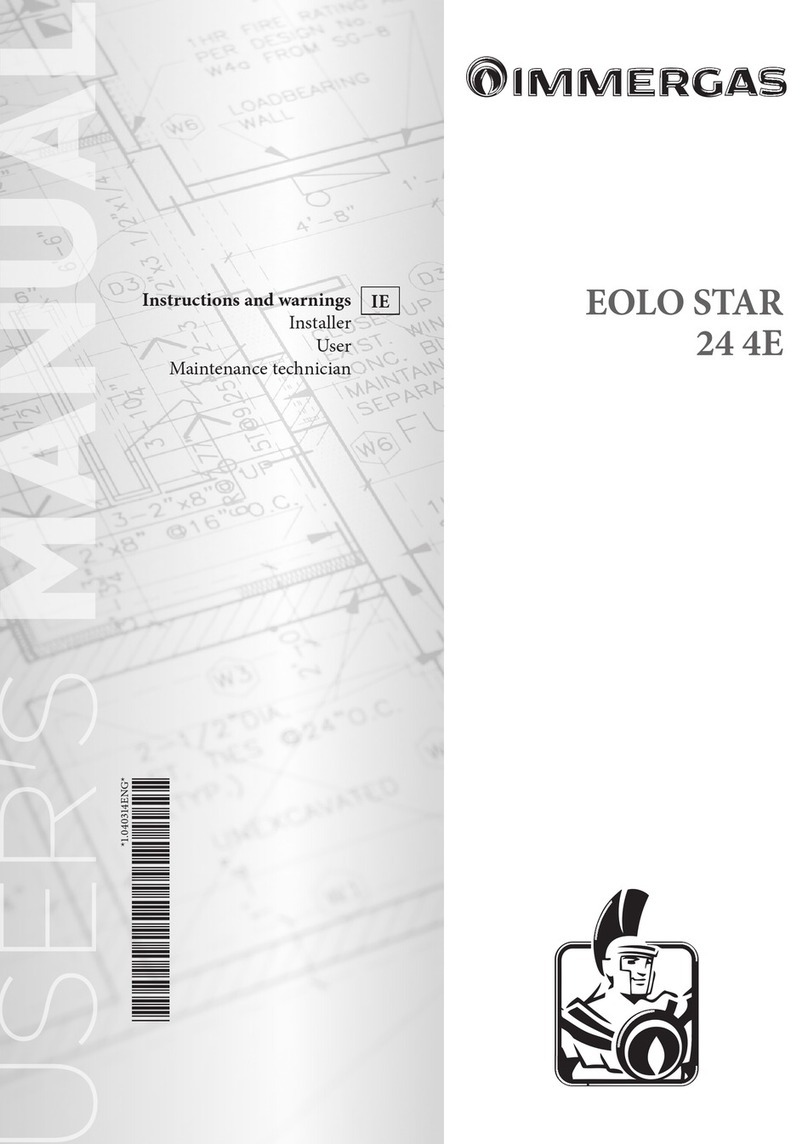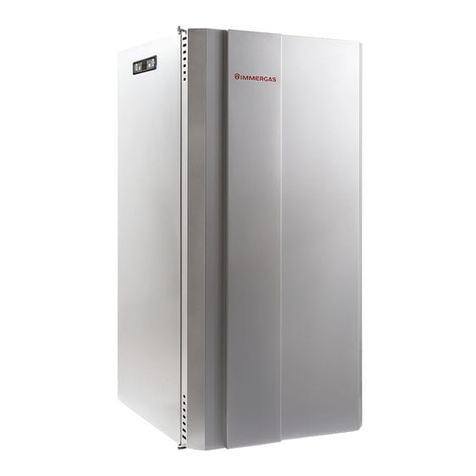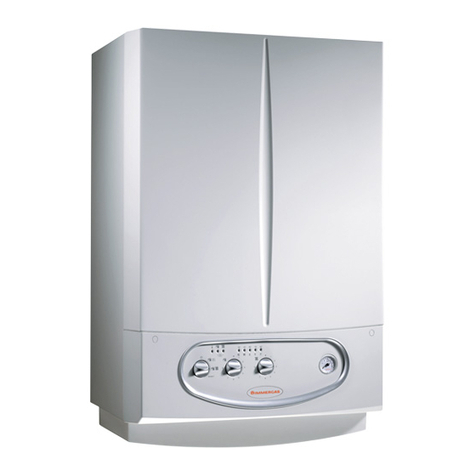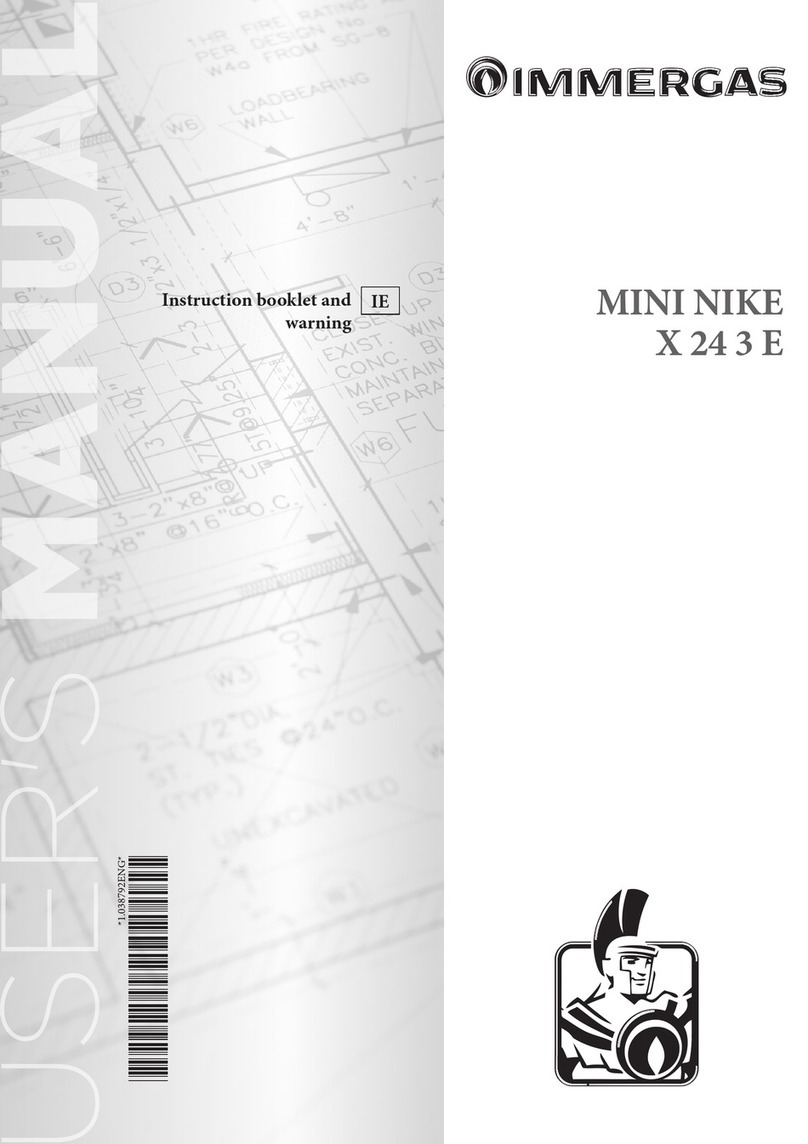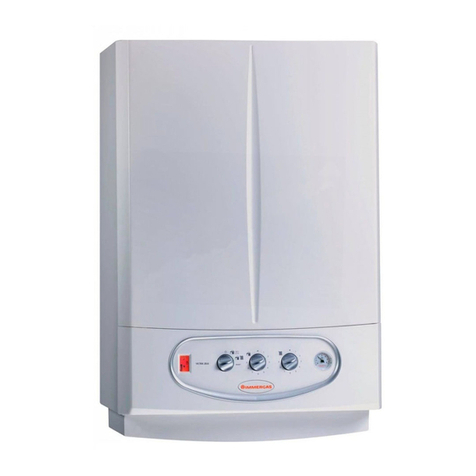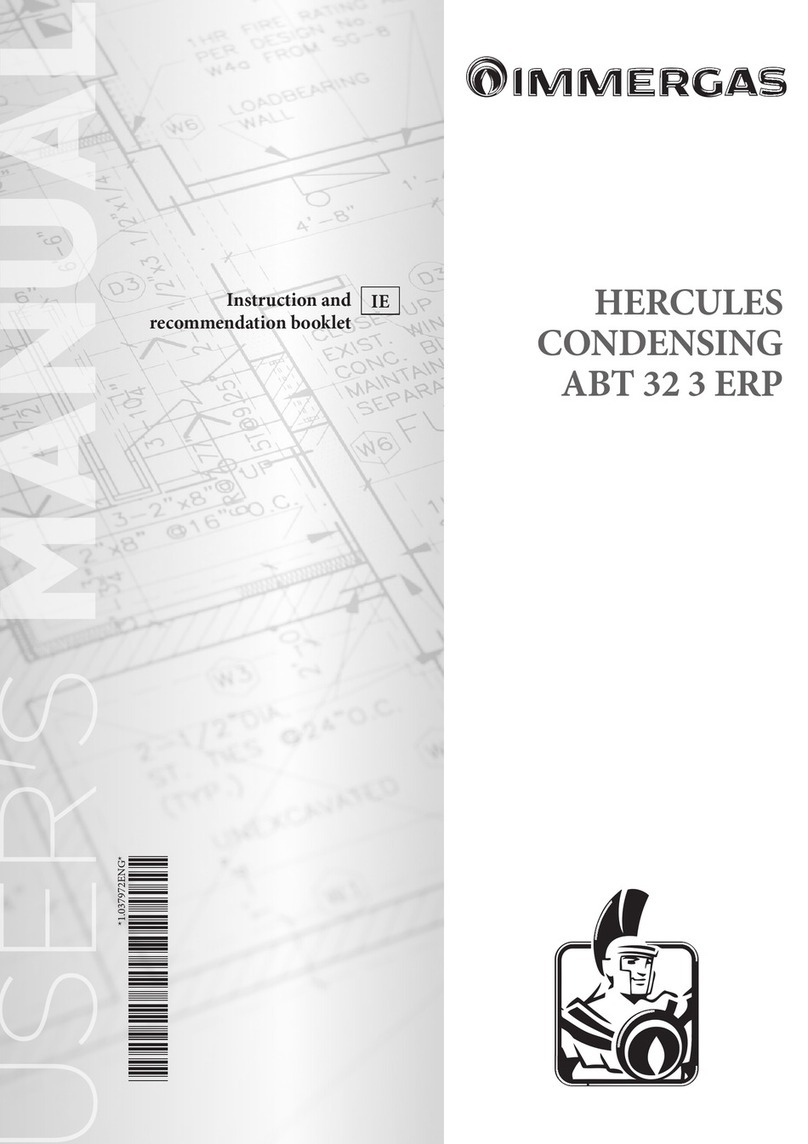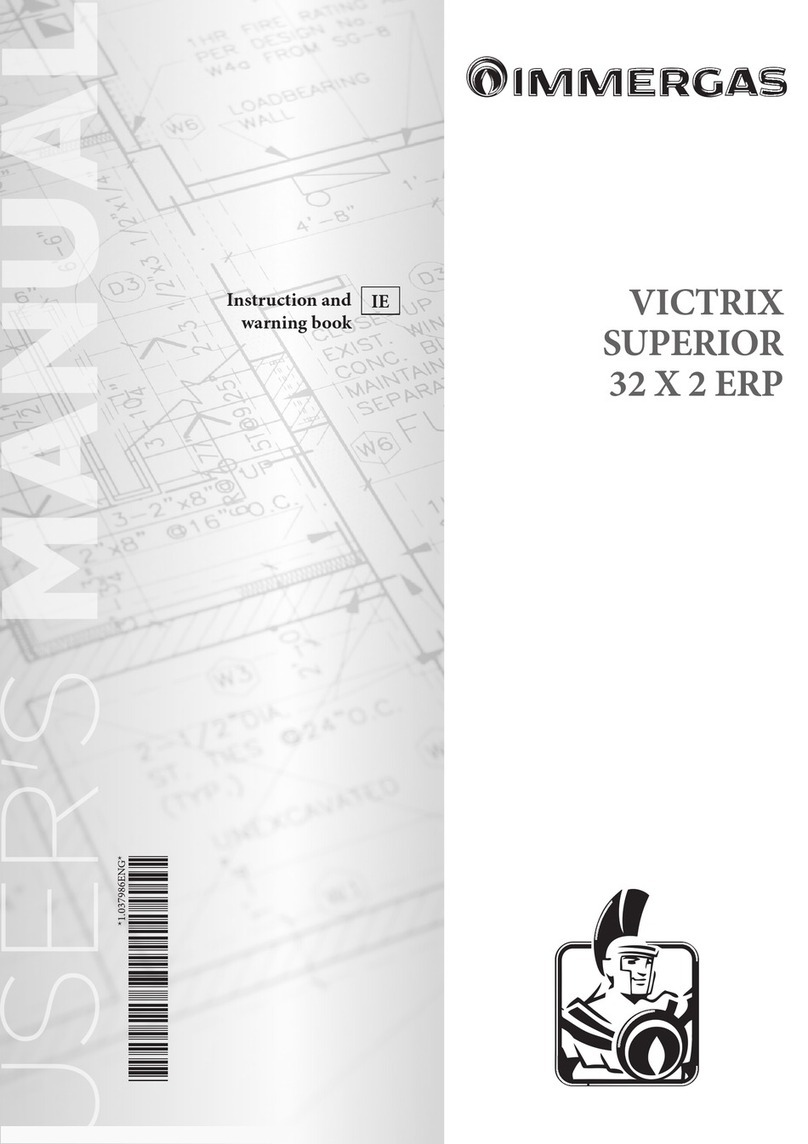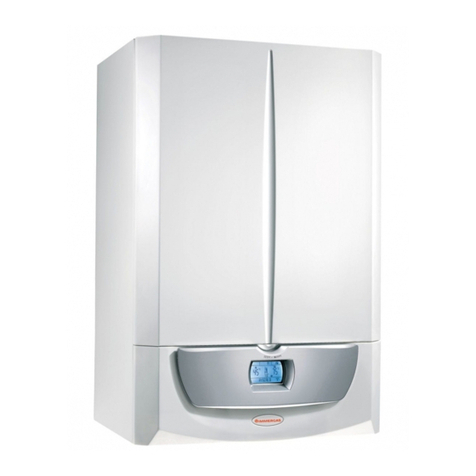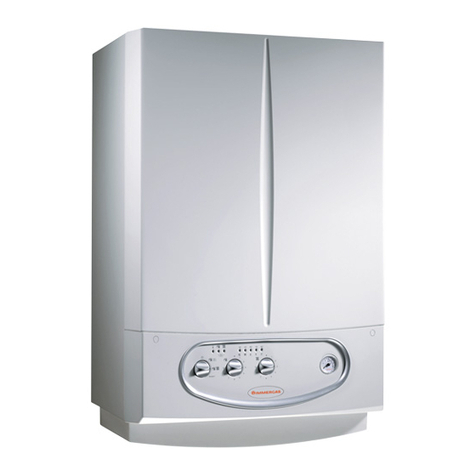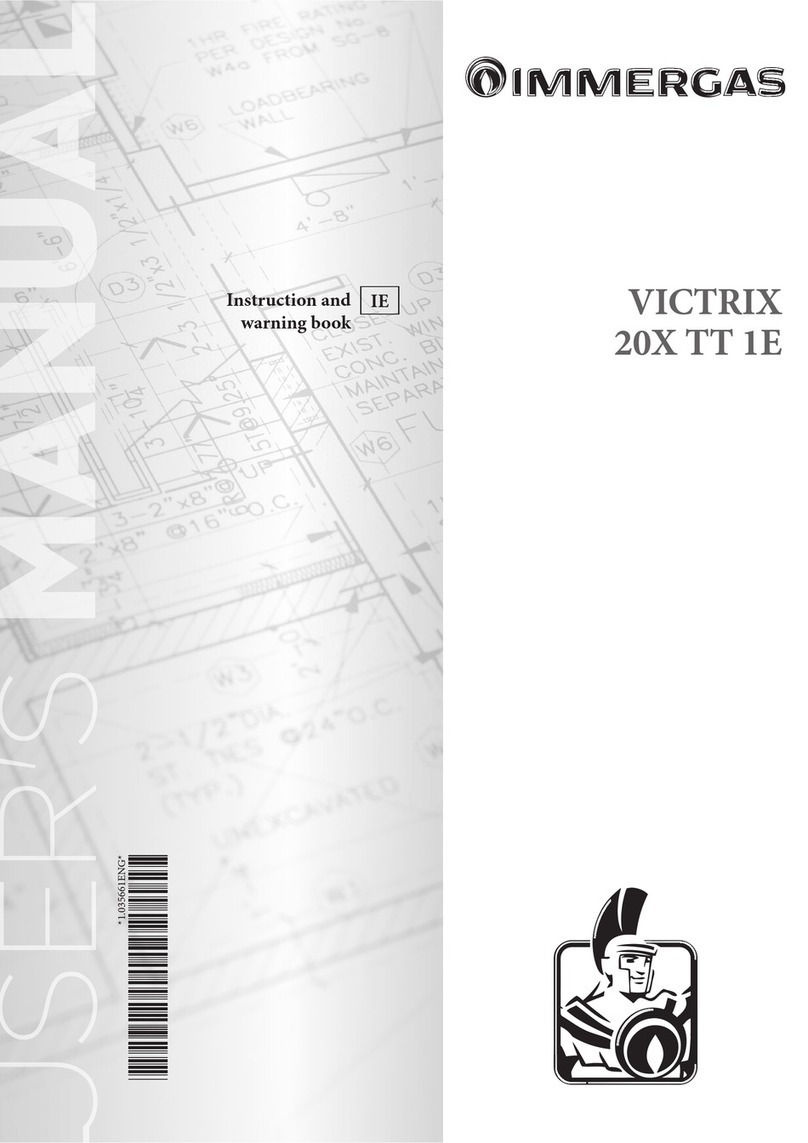
INSTALLER
USER
TECHNICIAN
6
obtain the wished room temperature value with
extreme precision and saving money. The timer
room thermostat is supplied directly by the boiler
with 2 wires, useful for the transmission of data
between boiler and room thermostat.
Electrical connection of Amico Remote Control
and Timer Room Thermostat on/off (Optional).The
operations later on described have to be achieved
after ta en out the power supply of the boiler. The
thermostat or timer room thermostat on/off, has to
be connected on the terminals 40 and 41 removing
the jumper X20 (see the picture page 5). Control that
the contact of Thermostat on/off is of “clean” type,
namely independent from the net tension, if not the
printed control board should be damaged. Amico
Remote Control has to be connected on the termi-
nals 42 and 43 of printed control board, according
the polarity (see the picture page 5). The connection
with inverted polarity doesn’t damage the Amico
Remote Control, but doesn’t allow his functioning.
After the connection is necessary to remove the
jumper X20. The boiler will wor with functions ad-
justed on the Amico Remote Control panel only if
the main switch of the boiler is positioned on Sani-
tary/Amico Remote Control position ( ).
Important: In case of use of Amico Remote Control,
is obligatory to prearrange two separated lines,
according to the local norms concerning electric
plants. Boiler pipelines must never be used to earth
the electrical or telephone lines. Ensure elimination
of this ris before ma ing the boiler electrical con-
nections.
1.4 Installin air intake and flue exhaust termi-
nals.
Immergas supplies various solutions separately from
the boiler for the installation of air inta e and flue
extraction, fundamental for boiler operation.
N.B.: The boiler must be installed exclusively with
an ori inal Immer as air intake and flue extrac-
tion system as specified by standards. This sys-
tem is identifiable by a special identification mark
bearin the note: “not for condensin boilers”.
The flue ducts have not to be near or in contact with
inflammable materials, and they have not to pass
through buildings and walls made of inflammable
materials.
The types of terminals available from Immergas com-
prise:
• Concentric horizontal inta e and exhaust it. This
terminal enables air inta e and exhaust of flues
directly outside the building. The horizontal it can
be installed with a rear outlet, right-hand outlet, left-
hand outlet and front outlet as required (see page
10).
• Concentric vertical air inta e and exhaust it. This
terminal enables vertical air inta e and flue exhaust
directly outside the building (see page 12).
• Separator it (Ø 80/80). This it enables air inta e
to outside the building and flue exhaust via a flue
(see page 13). The central duct is used for flue
exhaust to the flue and the lateral duct is used for
air inta e to outside the building (can be mounted
on left or right side of central duct). Both ducts can
be routed in either direction (see page 13).
• Resistance factors and equivalent lengths. Each
flue extraction system component is designed with
a resistance factor based on preliminary tests and
specified in the table below. The resistance factor
for individual components does not depend either
on the type of boiler on which it is installed or the
actual dimensions. It is based on the temperature
of fluids conveyed through the ducts and therefore
varies according to applications for air inta e or
flue exhaust. Each component has a resistance
corresponding to a specific length in metres of pipe
with the same diameter; the so-called equivalent
length, based on the ratio between different resist-
ance factors, for example : Ø80 90° bend; resist-
ance factor on inta e 5; 1-metre Ø80 pipe; resist-
ance factor on inta e 2.3; equivalent length of 90°
Ø80 bend = 5: 2.3 = 2.2 m of Ø80 pipe on inta e.
In the same way each component has a resistance
factor corresponding to a specific length in metres
of a pipe with a different diameter, for example a
concentric 90° bend Ø60/100 Resistance Factor
21; pipe Ø80 m1 on exhaust, Resistance Factor =
3; Equivalent length of 90° bend Ø60/100 = 21 : 3 =
7 m of Ø80 pipe on exhaust. All boilers have a maxi-
mum resistance factor based on testing at 100. The
maximum admissible resistance factor corresponds
to the resistance detected with the maximum ad-
missible pipe length with each type of Terminal Kit
installed. This information enables calculations to
verify the possibility of various configurations of flue
extraction systems.
